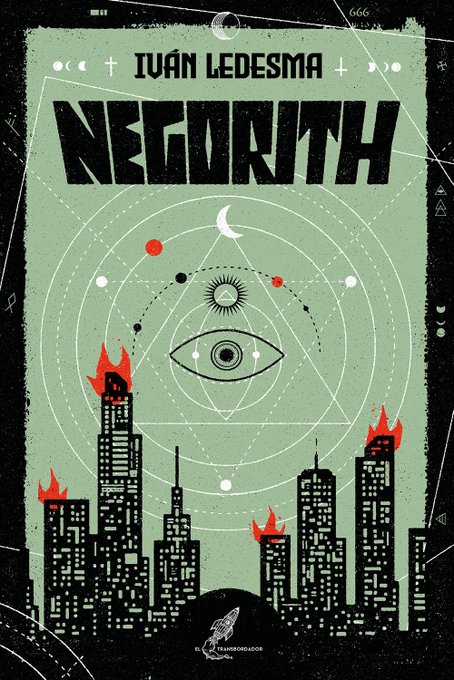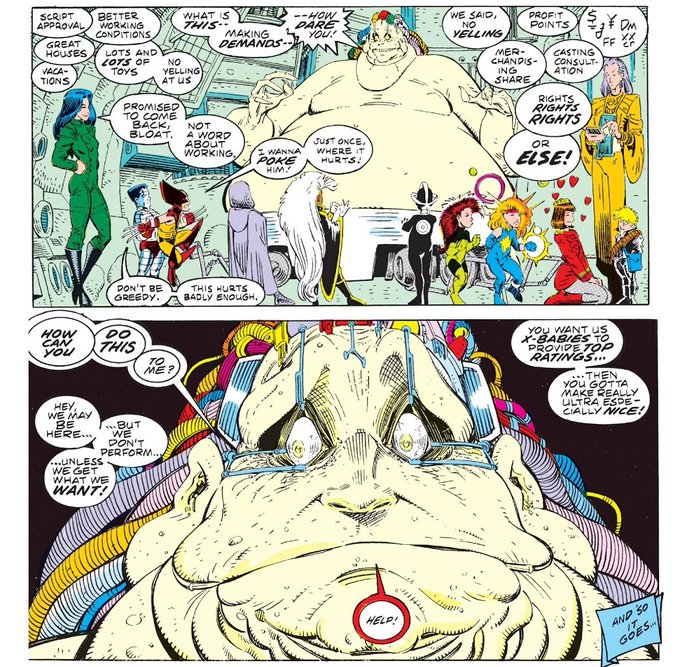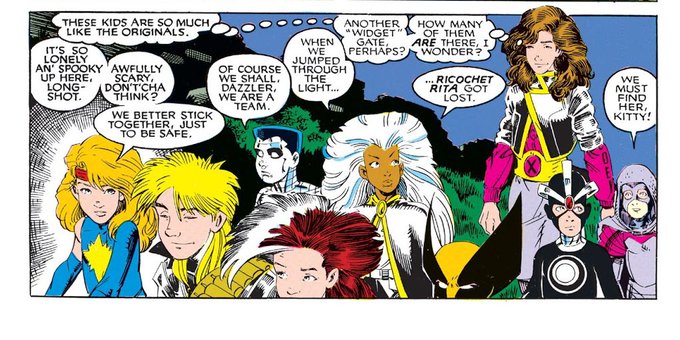LaREMのTwitterイラスト検索結果。 1,571 件中 40ページ目
...confusion over her burgeoning sexuality, the entire series of scenes read like (standard for Claremont) discussions of different aspects sexual agency–or lack thereof.
Ororo is about to reveal to Dani the true nature of their opponent, which she has surmised given her...
Ni un segundo para @Ivanledesma que desde el pasado @festivalcelsius nos trae el guión de una peli de Netflix, una novela como NEGORITH o una saga de literatura infantil como DRAGONXS, entre otras cosas.
En el #celsius2021 hablaremos con él de todo.
...of the series' current trajectory without addressing Claremont's openly fatphobic and Orientalist tendencies–at the center of which lies the transformed and possessed Karma.
I don't want to beat the dead horse here, but Leialoha's art does little to mitigate the discomfort...
...come, but how much the book itself has evolved since Claremont and McLeod's take on the Marvel Graphic Novel introducing its New Mutants.
The cast has expanded, essentially doubling in size, but each of the teenagers has matured considerably as the series has developed.
...he'll later come to be identified as, but if anything, it proves the dimension that Claremont writes into his characters rather than leaving them archetypal.
Seeing Xi'an's polaroid of the first assembled version of the team really highlights not only how far its cast has...
It’s a great time for enjoying solitary walks and being immersed in the many moods of the coast. “A Patch of Sunlight”, 85X85cm, oil on linen.
#richardclaremont #design #abstract #designerart #artist
(5/6) almost to the end of the Lola/ Nora scene, hope we get canon heights of the #huniepop2 girls soon~
#huniepop #indiegame #indiegamedev #gamedevhour #visualnovel #datingsim #webcomic #gamedev #comicstrip #gameart #spoilers #noradelrio #lolarembrite #ArtistOnTwitter #comicart
"History huh? bet we could make some..."
🔄 + ❤ = 🥰
.
.
.
.
#BookTwitter #booktwt #vermelhobrancoesangueazul #vbsa #redwhiteandroyalblue #alexclaremontdiaz #PrinceHenry #artontwitter #Desenhos #fanart #draw #desenho #livros #PrideMonth2021
On the other hand: the X-Babies’ bombastic resilience embraces the dynamic multiplicity of popular characters whose meaning is always collaborative, between numerous creators and between producers & fans. The X-Babies exceed Claremont’s control—but they also exceed Mojo’s. 11/11
The X-Babies are a self-effacing nod to the perceived juvenility of superhero comics. In Mojo Mayhem, published 2.5 years before Claremont was forced out of the franchise he indelibly transformed, they also reflect the bittersweetness of writing characters one can never own. 8/11
...with Kurt–despondent after meeting the cosmic entity–Claremont again proves that superheroism isn't all sunshine and keys to the city–it comes with trauma and loss and fear.
The Uncanny X-Men are so beloved because they feel like actual, living people, and it's moments...
...dread hangs over the book that builds with each reappearance of the Beyonder.
Arguably a Secret Wars II tie-in, UXM #196 never feels bogged down by that whole mess's content–rather, Claremont uses the Beyonder as a plot device rather than a plot driver.
His presence works...
In essence, Claremont tempts Ororo with this alternate lifestyle again in order to reiterate the fundamental duality of her character: yes she understands duty and obligation but there’s a part of her that would much rather just steal your wallet and run away laughing. 9/12
After being suggested over the last two issues, Karma's puppetry of the Arena is only formally revealed when Sam confronts her face to face.
The subtext of his response, "Glory! It's a girl!" communicates that we should all be shocked that what Claremont wants us to see...
...even in a Run as celebrated as Claremont's–because the truth is that these stories are, in fact, harmful.
They equate the size of one's body with amoral wickedness, ironic given the specific underpinnings of the mutant metaphor that encourage us to think the opposite is true.
...undermines whatever efforts he's making. Kitty has often been (and will often be, for better or worse) Claremont's mouthpiece for what he actually means to say, and so her use of derisive fatphobic insults also cuts at his point.
Sadly, Sienkiewicz's art doesn't help his...
...fairly problematic storytelling (and wildly regressive, especially considering the more typically feminist nature of his books) is made worse by the reappearance of Claremont's fatphobic characterizations.
Claremont has used weight to signal the "evil" in characters before...
...a monumental send off for the incredibly talented artist, however, is unfortunately marred by Claremont's indulgence of some of the Run's worst characteristics.
Claremont loves his personal tropes–chief among them involuntary body modification–and what would already be...
...its earliest issues looked closer to the Silver Age X-Men series than it did Uncanny. Yes, it featured Claremont's signature mastery of pathos, but it often stumbled through plots as Claremont worked to find voices for each of his new characters.
What should have been...


























































